These Are The Best Smartphone Options Available Today
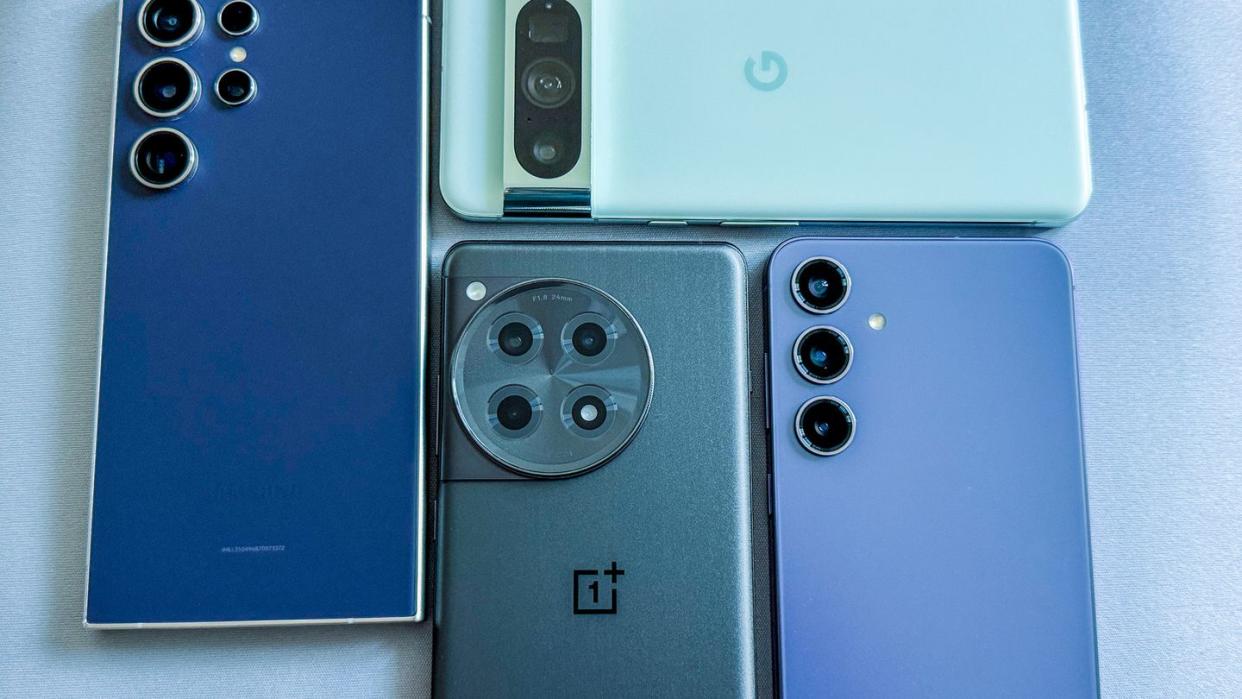
"Hearst Magazines and Yahoo may earn commission or revenue on some items through these links."
The smartphone market has reached a point where the majority of devices are good. With high-resolution displays, long-lasting batteries and advanced camera systems, smartphones are more powerful than they’ve ever been. But with the sheer number of options available, especially among Android phones, it can be difficult to upgrade with confidence.
The choice gets even trickier if you’re on the fence about trying a folding phone, which can expand into the size of a small tablet. Remember flip phones? They’re back too. Meanwhile, brands are starting to introduce AI features as a way to stand out.
Let’s focus on the positive, though: There are lots of great choices right now. Whether you’re searching for the biggest, shiniest do-it-all flagship or competent and affordable mid-range phone that will get you from point A to point B, the best smartphones offer a winning combination of features, performance, and value.
The Best Smartphones
Best iPhone: Apple iPhone 15
Best Android: Samsung Galaxy S24
Best Value: Google Pixel 8
Best Camera: iPhone 15 Pro Max
Best Folding Phone: Samsung Galaxy Z Fold 5
The Expert
Over the years, I’ve tested and reviewed dozens of smartphones, including top-of-the-line models from popular brands like Apple, Samsung, and Google. Even when I’m not writing a review, I find myself switching between phones all the time so I can tinker with different platform camera systems, software features and designs. (A perk of the job.) In addition to covering tech for Best Products, you’ll find my reviews and stories on tech at publications like Popular Science, Esquire, and Popular Mechanics.
What to Consider in a Smartphone
For most of us, the smartphone is the most important piece of technology you own. It’s your camera, your calendar, your notepad, and your portal to the web. Oh, also texting and phone calls. It’s important that you find one that fits your life and does everything you need it to do. That means it needs to be intuitive and work well, with a sharp camera, long battery life, and have all the software you need. Before you make up your mind: Here’s a primer on the basics of smartphone hardware, which you should keep in mind whenever you’re shopping for a phone.
Processor
The processor is your smartphone’s brain. There’s a direct correlation between its power, and your phone’s performance–whether apps run quickly and smoothly, the number of apps you can have open and running before it slows down, and so on.
Buying a phone with the latest processor will ensure the best possible performance for several years, ensuring smoother multi-tasking, faster loading times, and the ability to take advantage of the latest features.
Apple and Google develop their own mobile processors, allowing them to better optimize their hardware and software. Other Android manufacturers primarily rely on chips from Qualcomm, whose Snapdragon chips are found in many mid- and high-end smartphones, including the Samsung Galaxy S24.
Software and Support
There are two popular mobile operating systems (OS): iOS, Apple’s software for the iPhone; and Android, the Google-made software used by just about everything else. There are some fundamental differences between them and how they function.
iOS offers a streamlined, intuitive interface, but restricts your ability to customize certain aspects of the phone experience.
Android, on the other hand, is open-source and fully customizable–to the point that many phone makers have tailored their own versions of it. That gives users more options to tinker and find software outside the confines of the Google Play Store, but also means that updates may take longer and you are more susceptible to security issues.
All that said, unless you dig deep, your experience may not change dramatically on Android or iOS. Most widely known utilities and apps are available on both platforms, and their core functions are usually aligned.
You should also pay attention to how long manufacturers plan to support their phones with software and security updates. Extended OS support provides users with newer software features, fixes for any bugs, and ensures their device remains protected from security threats.
Apple generally provides OS updates for between five and seven years. Support for different versions of Android varies from manufacturer to manufacturer, but many of the major brands also commit to at least five years of support. Google, unsurprisingly, offers the best long-term support for its Pixel phones. In 2023, it committed to seven years of support for the Pixel 8 and Pixel 8 Pro.
Cameras
Pretty much every new smartphone can take excellent photos in broad daylight, whether it costs $500 or $1,500. The difference between newer and/or more expensive phones and cheaper hardware becomes clear when you shoot in low-light situations, like a poorly lit room or in twilight. Expensive “flagship” phones–the top-of-the-line options from each brand–feature larger sensors, multiple lenses, and advanced software that can help make photos sharper and smoother. The same goes for video. More expensive phones give you better lenses and the ability to record in higher resolutions and frame rates.
Most phones also have a front-facing “selfie” camera. They usually don’t offer the same fidelity as the primary camera cluster, but they often have the specs you need for quick reaction shots and video calls, and can enable other features like using facial recognition to open your phone, rather than a password.
Display
The size of the modern smartphone display is typically between 6- and 7-inches, though there are a few “mini” phones like the iPhone SE, which has a 4.7-inch display, and an increasingly large number of extra large options on folding phones like the OnePlus Open, which has a 7.8-inch inner display. It’s ultimately a personal preference, but both larger- and smaller-than-average phones have advantages. A large display is great for watching movies and playing games. Going the other way, people with smaller hands often prefer smaller phones. They’re also easier to fit in your pocket.
The type of display panel used in your phone is also increasingly important. An increasing number of mid-range and high-end devices feature OLED (Organic Light-Emitting Diode) displays, which achieve deeper blacks and more vibrant colors by lighting each pixel on your screen individually. That said, Liquid Crystal Displays (LCD) are still common, especially in budget-conscious devices. As with TVs, OLED technology gives you the best possible picture, but LCD is far from outdated.
In addition to size and resolution, framerate is an increasingly popular way to distinguish high-end phones. A higher refresh rate, measured Hz, results in smoother animations when navigating the software and playing games. You should expect high-end phone displays to support a higher refresh rate–usually 120Hz. Consider it a welcome bonus in more budget-friendly models.
Battery life
Most smartphones should be able to last for at least a full day of intermittent use on a single charge. You should be able to use your phone web browsing, sending messages, capturing photos, playing games, and watching movies, without needing to watch your battery.
When comparing phones on battery life, check the battery’s capacity, often measured in milliamp hours (or mAh), and the manufacturer’s estimated battery life for specific tasks, like listening to audio or watching movies. Theoretically, the higher the capacity, the longer the battery life. In practice, your battery life will vary charge to charge based on a number of factors, including screen brightness, what apps you use, and whether you spend long stretches actively engaging with it.
Other features
Beyond the essential components of your phone, there’s a whole wide world of fun and helpful secondary features that manufacturers will add to make their phones stand out from the crowd. For example, wireless charging is more or less standard across the industry, allowing you to top up with a charging station, rather than plugging in a cable.
You should also keep an eye on the phone’s “ingress protection” rating, which tells how waterproof and dustproof it is. I recommend looking for a rating of IP68, which means that your phone will be able to survive if it’s submerged in water or drops in dirt.
Finally, look out for the security features your phone offers. Biometric authentication replaces traditional passwords with secure methods like fingerprint sensors and facial recognition. Data encryption can scramble your information on the device, while a secure enclave can act as a vault for sensitive information and protect it from unauthorized access. Location-tracking features like Apple’s “Find My” makes it possible to locate, lock, and erase your iPhone if it’s lost or stolen.
More often than not, each new iteration of each new phone will have at least one or two unique signature features, like the iPhone’s Dynamic Island or the Galaxy S24’s powerful AI features.
How We Selected The Best Smartphones
Over my 10-year career working as a tech journalist, I’ve set up and tested more than 50 smartphones, from mid-range devices to the latest flagships. Over the last few years, I’ve tested many of the newest flagship and mid-range devices, using them to take pictures, play games, and experience the latest features each phone has to offer. I drew on all that knowledge to pick the best phones you can buy today, as well as expert insights from tech-savvy editors at Best Products and Popular Mechanics.
iPhone 15
The iPhone 15 offers the best balance of features, camera quality, and price for most people. Released in 2023, the standard iPhone inherited some of the exciting features introduced in the premium versions of the iPhone 14, including the pill-shaped “Dynamic Island” cutout for the front-facing camera, a faster processor, and upgraded camera system.
The thing you’re most likely to notice, though, is the switch from Apple’s proprietary Lightning port to a USB-C charging cable, making it easier to find a charging cable and bringing the iPhone 15 in line with the “pro” experience.
The iPhone 15 boasts a vibrant 6.1-inch OLED display that can hit a peak brightness of 2,000 nits outdoors, making it easier to see and use the phone in direct sunlight. It also features a new 48-megapixel dual-camera system, providing more flexibility when cropping photos and allowing you to capture professional-looking portraits, even when you don’t manually choose the software’s Portrait mode.
When shooting video, the iPhone 15 can record video up to 4K resolution at 60 frames per second with Dolby Vision HDR support for enhanced contrast and colors.
The iPhone 15 provides a balance between features and cost, but those who want a more advanced camera system and an always-on display may want to consider upgrading to the iPhone 15 Pro or Pro Max, which offer an even more powerful processor, more cameras, and an ultralight-but-durable titanium case.
In addition to improved performance, they both offer a smoother 120Hz display for more fluid menu animations and smoother games. They also feature an always-on display, allowing you to check the time, date, and your notifications at a glance.
These are all enticing features, but for at least $200 extra, the Pro is quite a bit more expensive: I think it’s better to save money and buy the standard iPhone unless you’re passionate about the tech behind the phone.
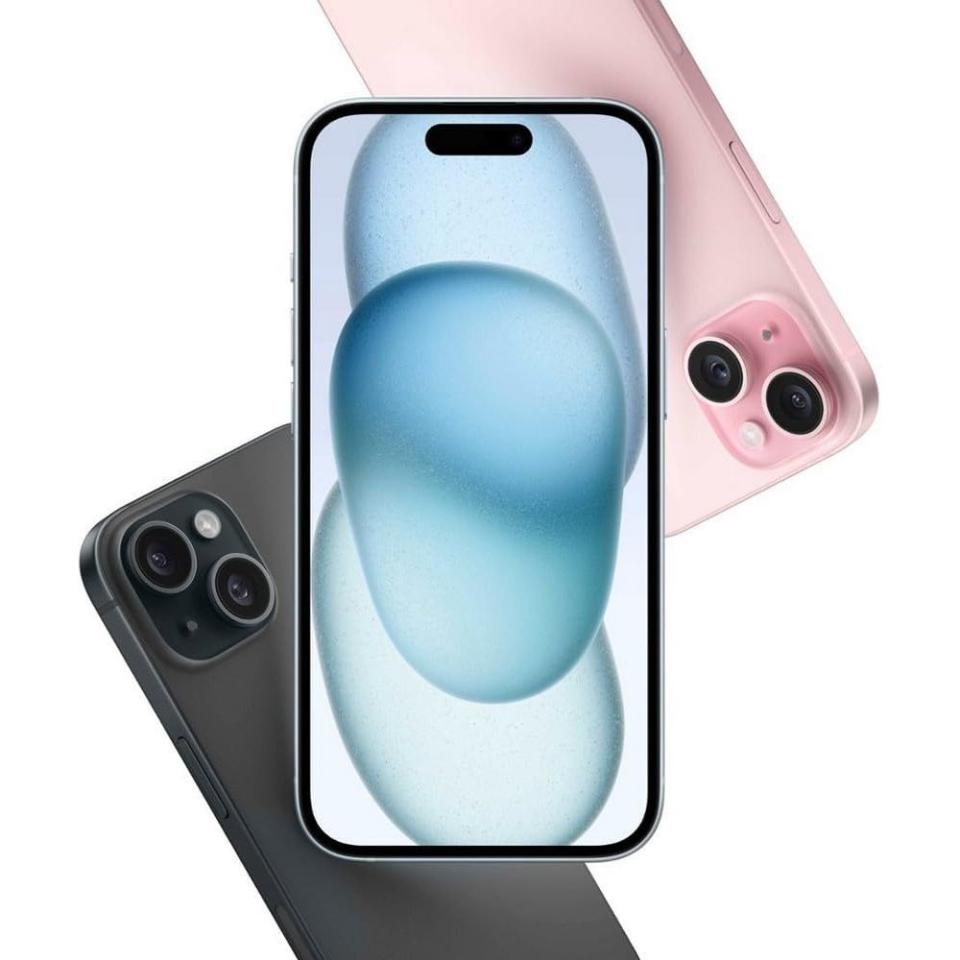
iPhone 15
apple.com
$799.00
Galaxy S24
The Android market is packed with several fantastic choices, but the Samsung Galaxy S24 hits the sweet spot for the average Android user by putting a ton of hardware and software features into an intuitive package. It boasts a beautiful and user-friendly design with a near bezel-less 6.2-inch AMOLED display that gets up to 2,600 nits of brightness. It also doesn’t sacrifice many high-end features despite its smaller size. It still has enough battery life to last all day, a versatile triple-lens camera system, and powerful AI features.
The Galaxy S24’s AI features include live translation for phone calls, making it easy for people who don’t speak the same language to communicate. There’s also “Circle to Search,” which allows users to circle an object on their screen and get back search results. For example, you can circle a jacket you spotted on social media, and you’ll get search results to help you find it online.
Like the iPhone 15, the Galaxy S24 is the most basic of three Galaxy S24 phones. The Galaxy S24 Plus is a bigger version of the S24: It has the same features, but in a larger handset with a bigger battery and a larger 6.7-inch display. The flagship Galaxy S24 Ultra has an even bigger 6.8-inch display, an ultrasonic in-screen fingerprint sensor, and a built-in S Pen for taking notes and drawing.
As with the iPhone 15, though, I feel that the standard S24 will give most people the features they need. It’s an impressive combination of design, features, and value for Android fans.
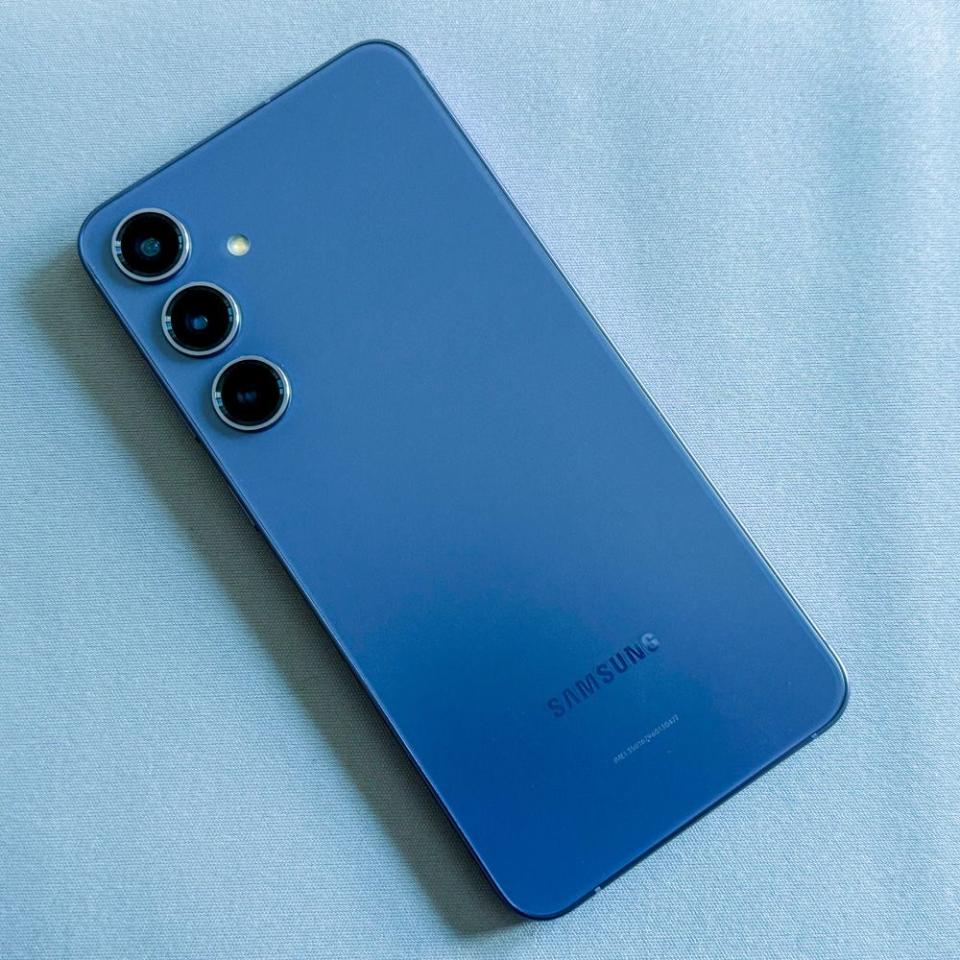
Galaxy S24
amazon.com
$1235.00
Stefan VazharovPixel 8
Google’s flagship Pixel devices have always been more affordable than their counterparts, and that’s no different here with the Pixel 8. Its 2000-nit, 6.2-inch OLED screen runs at a smooth 120Hz refresh rate to deliver incredible image quality. Plus, with an edge-to-edge screen design,and a tiny camera punchout you may not even notice, the display is on par with a top-of-the-line flagship phone.
On the camera front, the Pixel 8’s dual-camera features a 50-megapixel main sensor, giving you plenty of room to crop your images without sacrificing quality. Google’s “Night Sight” feature is back, which shoots multiple images at different exposures simultaneously and combines them in a single photo, allowing you to capture bright, detailed, and color-accurate photos in low light.
Beyond the hardware, the Pixel 8 includes powerful editing tools you won’t find on any other line of phones. “Best Take” analyzes and combines multiple photos to ensure everyone looks their best in group shots. And for videos, the “Audio Magic Eraser” tool can reduce unwanted background noise like traffic, crying babies and barking dogs.
Google also offers the Pixel 8 Pro, which features a larger 6.7-inch display and more advanced triple-camera system, including a 48-megapixel telephoto camera. It’s substantially more expensive than the standard Pixel 8, but also quite the bargain for a iPhone Pro/Galaxy Ultra-tier device. Still, the Pixel 8 is ultimately the best value. especially while you can get one for less than $500.
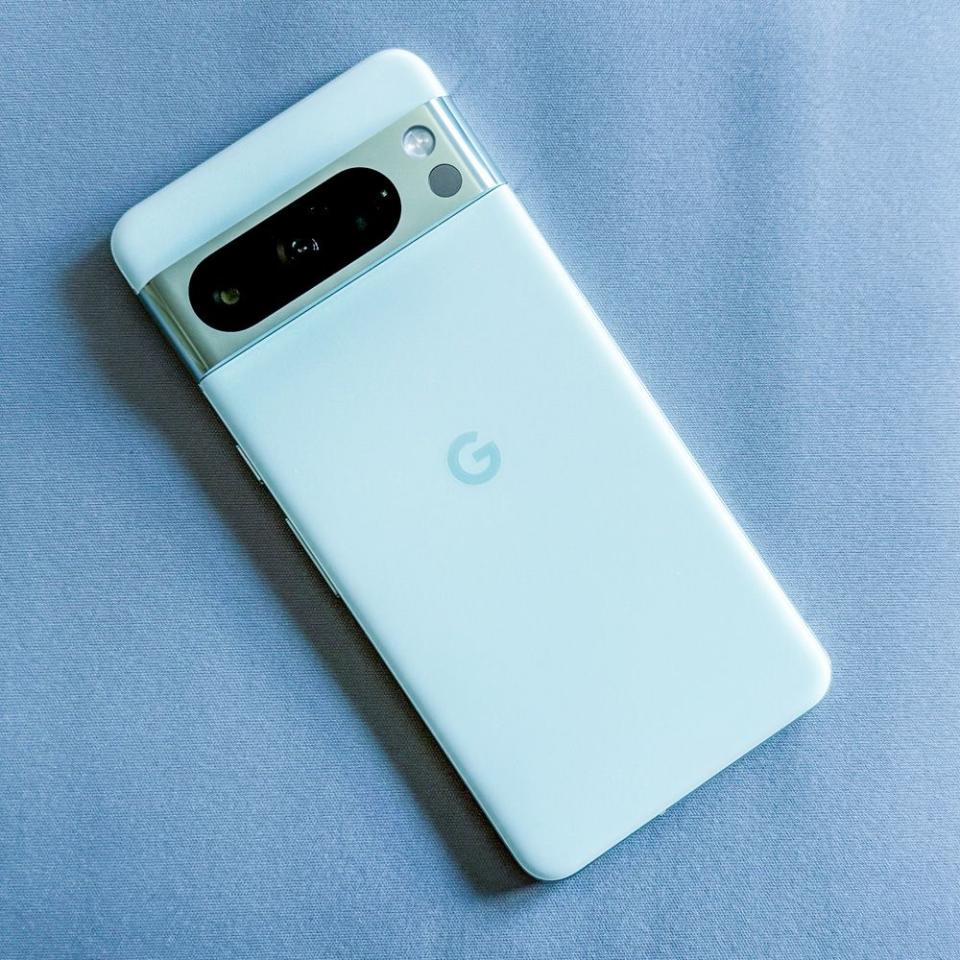
Pixel 8
amazon.com
$499.00
Stefan VazharoviPhone 15 Pro Max
Apple’s biggest, most powerful phone isn’t cheap, in part because it has an enhanced camera system that produces incredibly sharp images that, true to its name, look like the work of a professional.
The extra-large phone features a triple-camera system, including a 5x telephoto lens that gives you more precise zoom to take clear pictures of faraway subjects like wildlife. The extra zoom also comes in handy when shooting portraits, allowing you to zoom in for tighter framing for professional-grade results without sacrificing image quality.
The camera system also features stabilization to compensate for shakiness, ensuring sharper photos and smoother videos. You can also capture photos in RAW format, giving you more granular control over editing. The device’s expansive 6.7-inch display makes for an excellent viewfinder when composing shots and reviewing photos, thanks to its sharp resolution and rich colors.
Creators and video lovers will love the iPhone 15 Pro Max’s ability to capture ProRes video. The format captures footage with a flat color profile, giving you much more flexibility when editing colors in post-production. It essentially provides more raw color data for editors to work with.
The pro-level camera is only part of what makes the iPhone Pro Max such an excellent option. The device also features a 6.7-inch always-on display, a huge battery, and an Action Button, which you can customize to perform an action or launch your app of choice.
While the iPhone 15 Pro Max comes at a premium price, it delivers an excellent camera experience that caters to those who prioritize capturing stunning photos and videos.
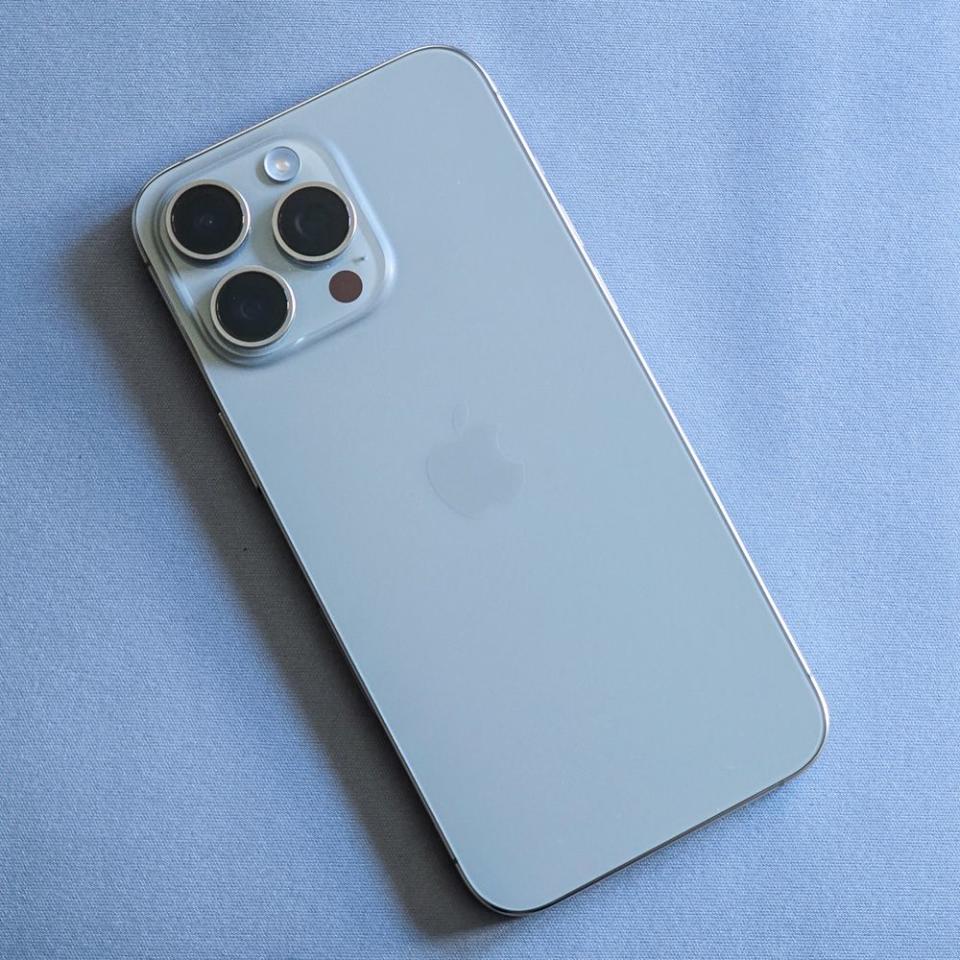
iPhone 15 Pro Max
apple.com
$1199.00
Stefan VazharoviPhone 15 Plus
We rely on our phones to perform dozens of tasks throughout the day, from providing directions to taking pictures and sending emails. Running out of battery at a crucial moment can be a huge inconvenience.
At this point, you can expect most new smartphones to have a day's worth of battery life, but the mid-tier iPhone 15 Plus can reliably power through a full day of use and into the next. That bigger battery gives you a longer lasting phone, which means you can use your phone for longer stretches without worrying about your phone dying.
Aside from its expanded battery life and a larger 6.7-inch OLED display, the iPhone 15 Plus is functionally the same as the standard iPhone 15. Both phones share the same powerful dual-camera system, innovative Dynamic Island, and blazing-fast performance. It’s an easy, uncomplicated and relatively affordable upgrade that’s perfect for anyone who’s glued to their phone 24/7.
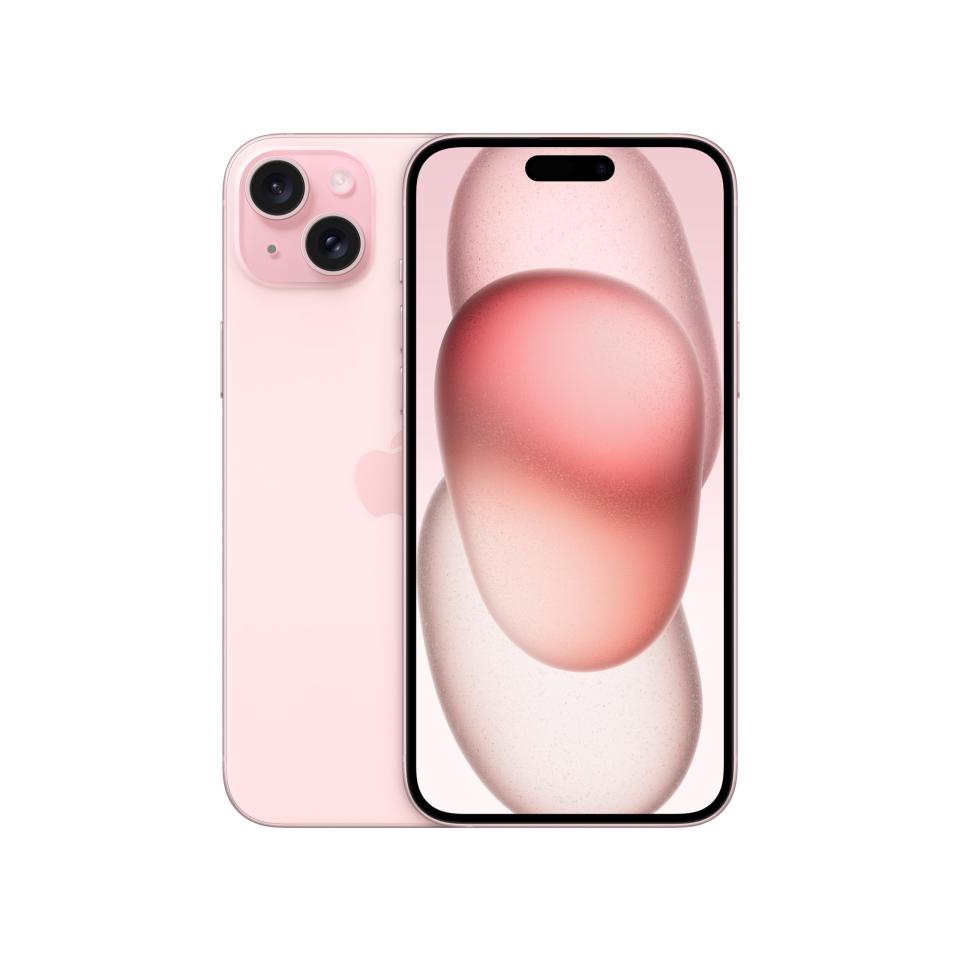
iPhone 15 Plus
amazon.com
$929.99
Galaxy Z Fold 5
Foldable display technology is still coming into its own, but brands like Samsung are making leaps and bounds with every iteration of its folding phones. Leading the way is the Samsung Galaxy Z Fold 5, which sets a high bar that competitors have yet to match.
The tall, thin 6.26-inch phone unfurls to reveal a spacious 7.6-inch inner screen that’s perfect for watching YouTube, playing games, and getting work done. The Z Fold 5 can run up to four apps simultaneously, so it’s easy to keep track of everything you’re doing. You don’t have to bring out the big screen to use it, though. There’s a 6.2-inch cover screen on the outside for quick calls, texts and anything else you might need to do on the go.
To navigate that giant inner display, the Z Fold 5 works with Samsung’s S Pen stylus (sold separately), which is a nice add-on for note-taking and more precise photo editing. It also has a versatile triple-camera system that includes a 50-megapixel main sensor.
While the technology is impressive, it’s worth keeping in mind that all foldable phones, including the Z Fold 5, come with some drawbacks. They are, broadly, more fragile than other standard handsets: The hinge mechanism that allows the phone to fold creates a small crease in the center of the screen, and may be susceptible to long-term wear and tear.
The folding display technology is also more susceptible to dust, which could damage the screen or hinge mechanism. The Galaxy Z Fold 5 boasts an IPX8 rating, meaning it can withstand submersion in up to 5 feet of water for 30 minutes (though dust is still a concern).
Between their durability issues and sky-high price tags, folding phones aren’t for everyone. At least, not yet. If you’re captivated by the technology (or really love watching movies on your phone), the Galaxy Z Fold 5 is the best option for early adopters.
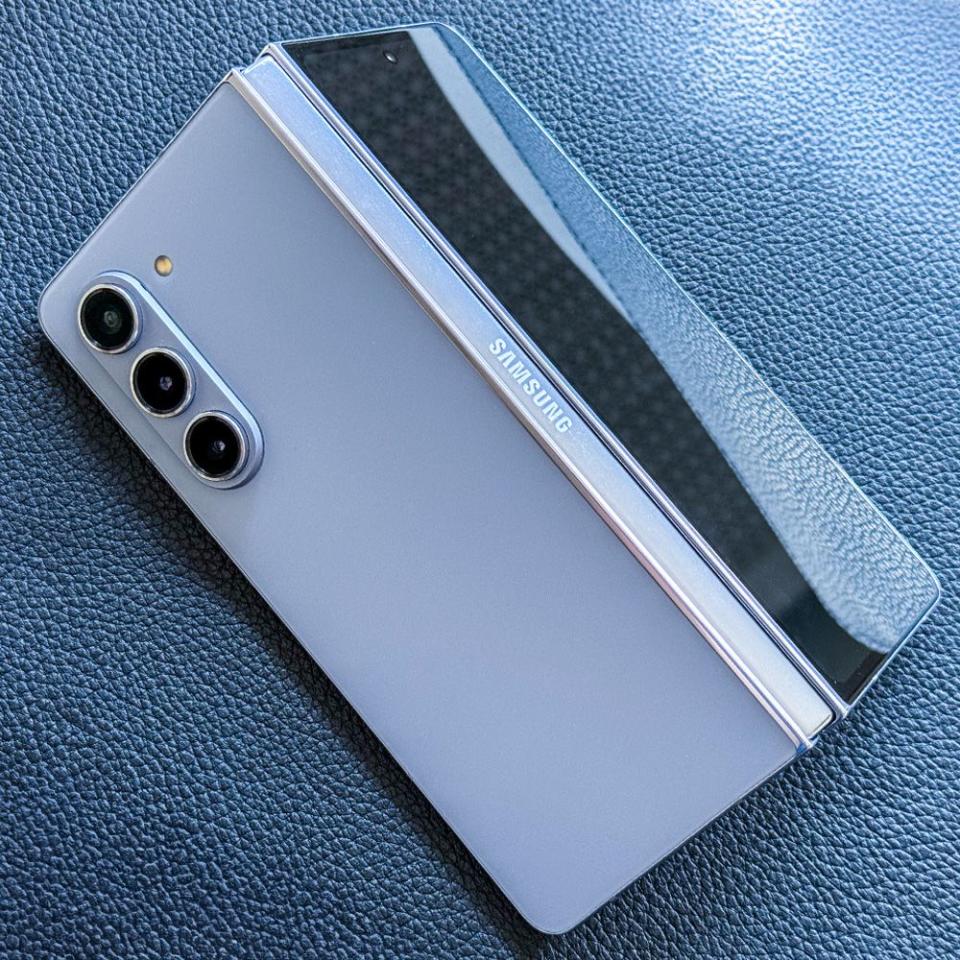
Galaxy Z Fold 5
amazon.com
$1519.99
Stefan VazharovGalaxy S24 Ultra
There’s a whole sub-category of “gaming phones” out there, which bring the extra graphics processing and sharp-angled hardware design of gaming PC to the mobile market. While these devices have their advantages, I still think that the best way to buy a gaming phone is to simply buy a phone that’s great at everything.
The Galaxy S24 Ultra stands as Samsung’s most feature-rich smartphone, catering to users who crave the latest in new technology. It boasts a massive 6.8-inch 120Hz AMOLED display, a Snapdragon 8 Gen 3 processor, and a beefy 5,000mAh battery.
Together, you get a phone that can make processor-intensive games like Fortnite look and feel their best. It also comes with a stylus, giving you more precise input control when you need it.
It is also a bigger, more powerful version of a phone we already love, the Samsung Galaxy S24. The S24 Ultra has a larger display with a higher peak brightness of 2,600 nits, so you’ll have perfect visibility of everything on your screen, even under the harshest sunlight.
Its quad-camera system features a 200-megapixel main sensor that supports a whopping 100x digital zoom (not a typo). That gives you the flexibility to take pictures of something really, really far away—you can capture a close-up photo of a pitcher on the mound from the outfield seats at a baseball game. The extra camera, equipped with a powerful telephoto lens, allows you to take more professional-looking portraits.
The S24 Ultra isn’t built specifically for gaming, but it has all the tools to optimize your mobile gaming life, including a large display, huge battery, and powerful Snapdragon 8 Gen 3 processor.
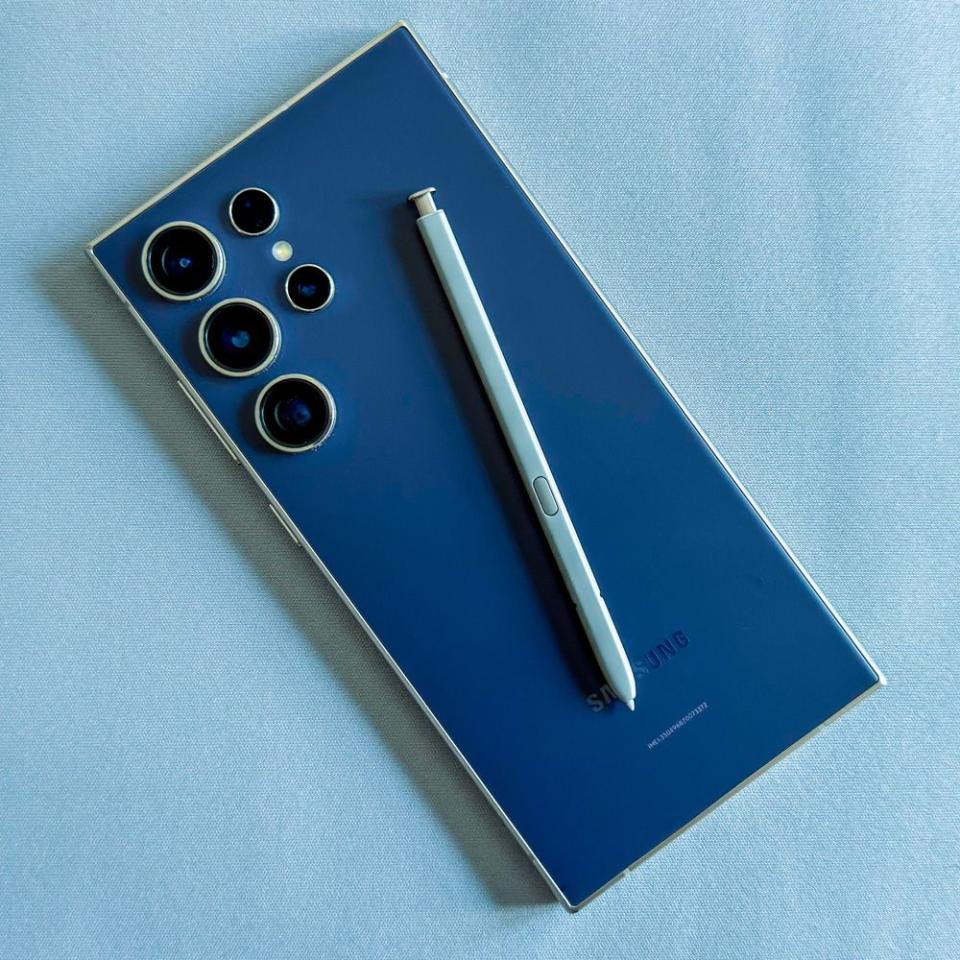
Galaxy S24 Ultra
amazon.com
$1365.00
Stefan Vazharov12R
If your budget is tight (or you just don’t care to spend a fortune on a new phone), I think OnePlus is a good brand to know. Its phones deliver high performance for less than the major Android brands like Samsung and Google. The brand’s budget phone, the OnePlus 12R, features comfortably mid-range specs, with a few flagship flourishes.
For starters, its extra-large 6.7-inch AMOLED display delivers smooth visuals with a fast 120Hz refresh rate for a great viewing experience. Incredibly, the display gets even better with a peak brightness of 4,500 nits, making everything easily visible in direct sunlight.
Powering the phone is last year’s Qualcomm Snapdragon 8 Gen 2 processor. While it’s not the latest chip on the market, it’s still powerful and can handle day-to-day tasks with ease.
The OnePlus 12R has a triple-camera setup, including a 50-megapixel main camera. It also comes equipped with a 5,500mAh battery, allowing you to get through a day or more before needing to recharge. Unfortunately, the OnePlus 12R doesn’t offer wireless charging, though it does feature charging speeds of 80-watts.
As a bonus, the OnePlus 12R features the alert slider, which allows you to easily switch from ring on, to vibrate, then silent without having to navigate through settings.
There are many mid-range Android phones that deliver all the same core functionality as the best, most expensive flagship handsets. With a triple-camera system, 6.7-inch 120Hz display, and 5,500mAh battery, the OnePlus12R goes even further, delivering high-end technological flourishes for less than $500. You really are getting more for less here.
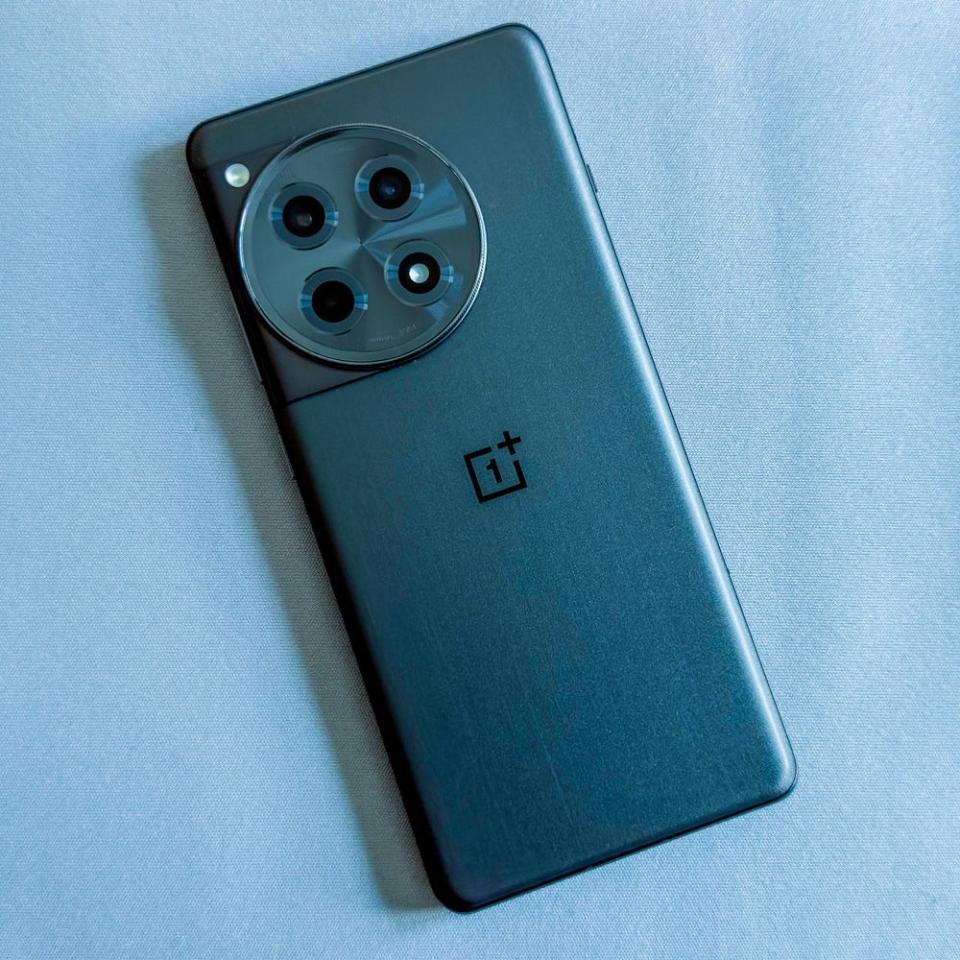
12R
amazon.com
$499.99
Stefan VazharovSmartphone Shopping Advice From Smartphone Expert Brandon Russell
What size smartphone should I get?
Finding the perfect smartphone size can feel like a Goldilocks situation—not too big, not too small. Unfortunately, there’s far less variety than there used to be. Compared to even a few years ago, it feels like most brands are locked in to producing 6-to-7-inch phones. Anything smaller–”mini” phones, if you will–are next to non-existent.
So the question is how far are you willing to go to have a smaller phone? Ideally, you should be able to comfortably hold your phone in one hand and reach every point on the screen with your thumb. If the iPhone 15 and Galaxy S24 literally slips out of your hand every time you reach for a far corner of the screen, you may want to think about forgoing the newest, most powerful phones in favor of the iPhone SE, one of the last sub-6-inch phones that’s still in production in the U.S..
If you aren’t sure whether you need to prioritize a smaller phone, the best solution is to go to a store and compare sizes. You’ll be able to feel the right answer pretty quick, especially if it isn’t the standard size.
Is it ok to buy an older smartphone?
Sure! If you don’t mind not having the latest cutting-edge features, you can save a decent amount of money by purchasing a phone that’s two or three generations old. Phones from the past few years will still be modern enough to receive software updates, both from MacOS/Android and most apps. In fact, many brands often keep older models on sale even after a replacement comes out at a lower price.
That said, you should keep in mind that an older phone will have a shorter lifespan than the current version. The manufacturer will discontinue software updates sooner.
Features that were once considered a luxury, like wireless charging, may become essential in the future. Many users replace their phones before they truly have to, but if you’re buying a phone and expecting to last as long as possible, you should go with the newest version.
How often should I upgrade my smartphone?
Smartphones are incredibly powerful these days, and manufacturers often make smaller, more incremental upgrades from year to year than in the early days of the smartphone. As a result, even tech-hungry phone enthusiasts may find themselves holding out for a few years between upgrades.
Assuming you aren’t a phone enthusiast who needs to see every new version, I’d recommend upgrading every three to five years. In that time, phonemakers will have updated their hardware enough that your new phone will feel like a massive leap forward.
Technically, though, most phones should be fine until they no longer receive software support, which is usually around seven years. If you want to hold onto it as long as possible, that’s the cutoff. (You should not use a phone that no longer receives updates. It puts the personal data on your phone at serious risk.)

You Might Also Like

